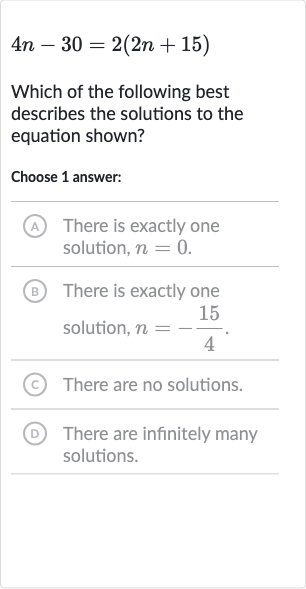Full solution
Q. Which of the following best describes the solutions to the equation shown?Choose answer:A) There is exactly one solution, .(B) There is exactly one solution, .(C) There are no solutions.(D) There are infinitely many solutions.
- Rephrasing the equation: First, let's rephrase the "What is the solution to the equation ?"
- Expanding the right side: Now, let's solve the equation step by step. We start by expanding the right side of the equation where the expression is.
- Simplifying the equation: Simplify the right side of the equation by multiplying the terms inside the parentheses by .
- Isolating the variable: Next, we will try to isolate the variable on one side of the equation. However, we notice that we have the same term on both sides of the equation. Let's subtract from both sides to see what happens.
- Subtracting from both sides: After subtracting from both sides, we get:
- Arriving at a contradiction: We have arrived at a contradiction, does not equal . This means that there are no values of that will satisfy the equation. Therefore, there are no solutions to the equation.
More problems from Solve rational equations
QuestionGet tutor help

